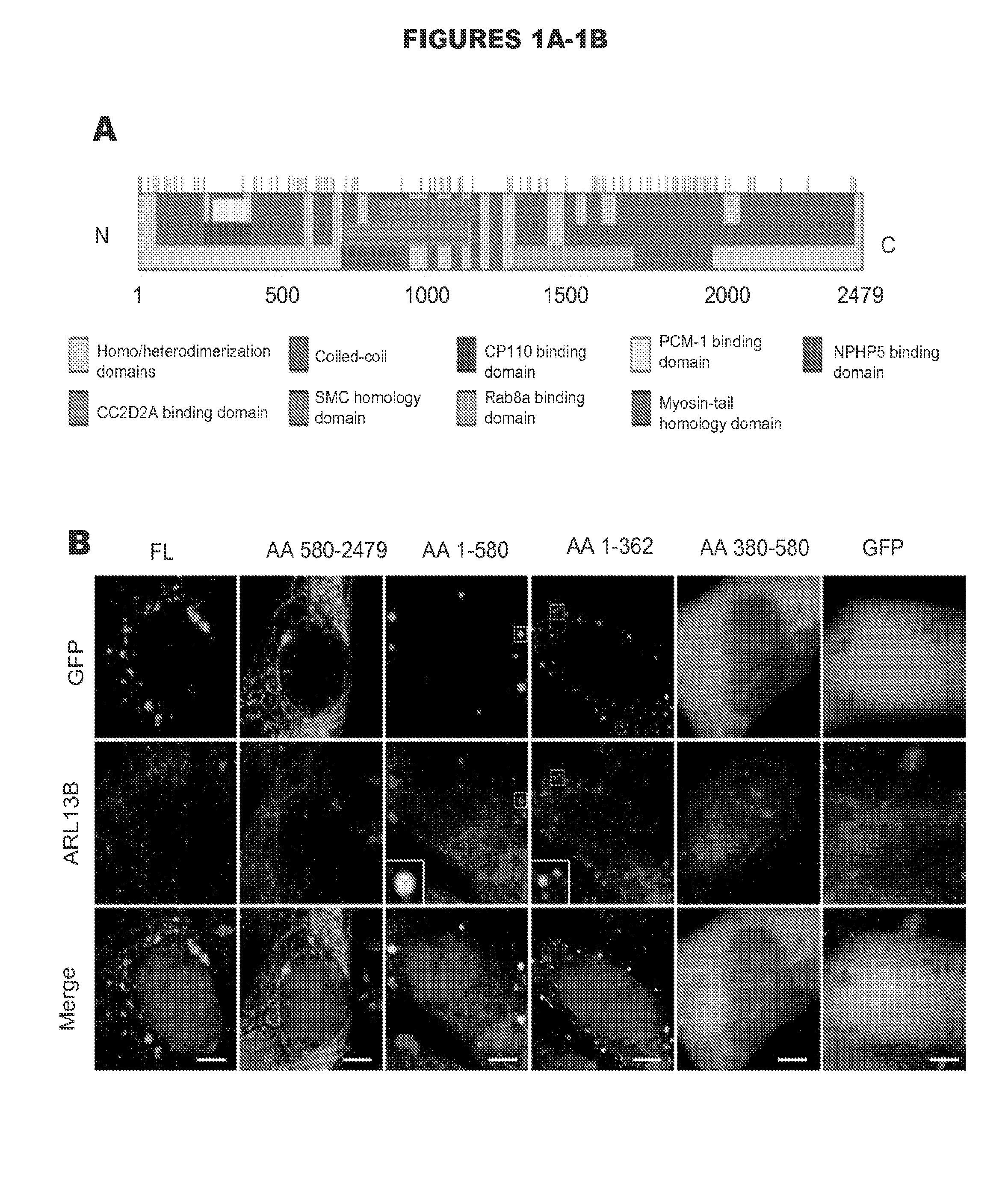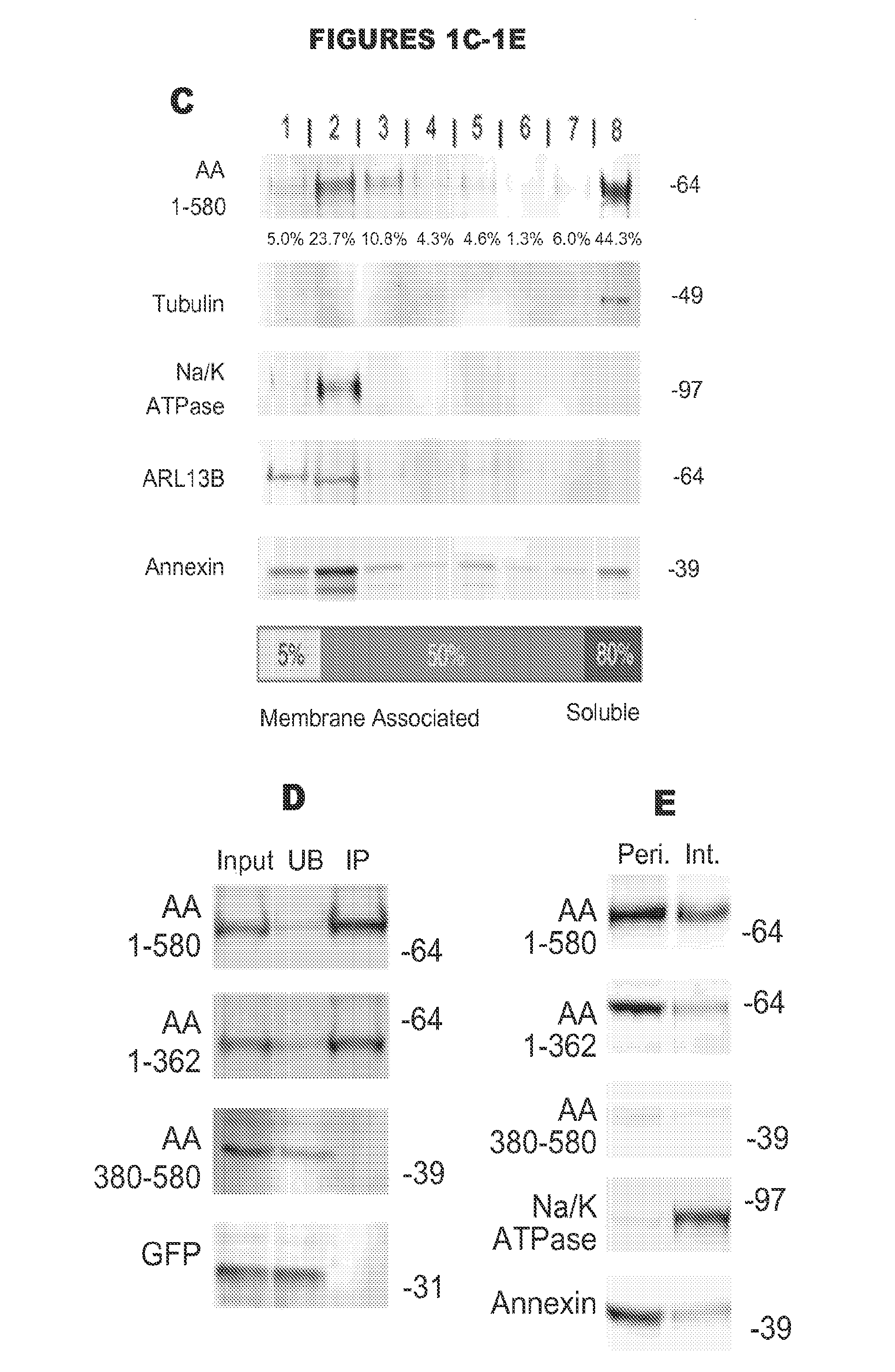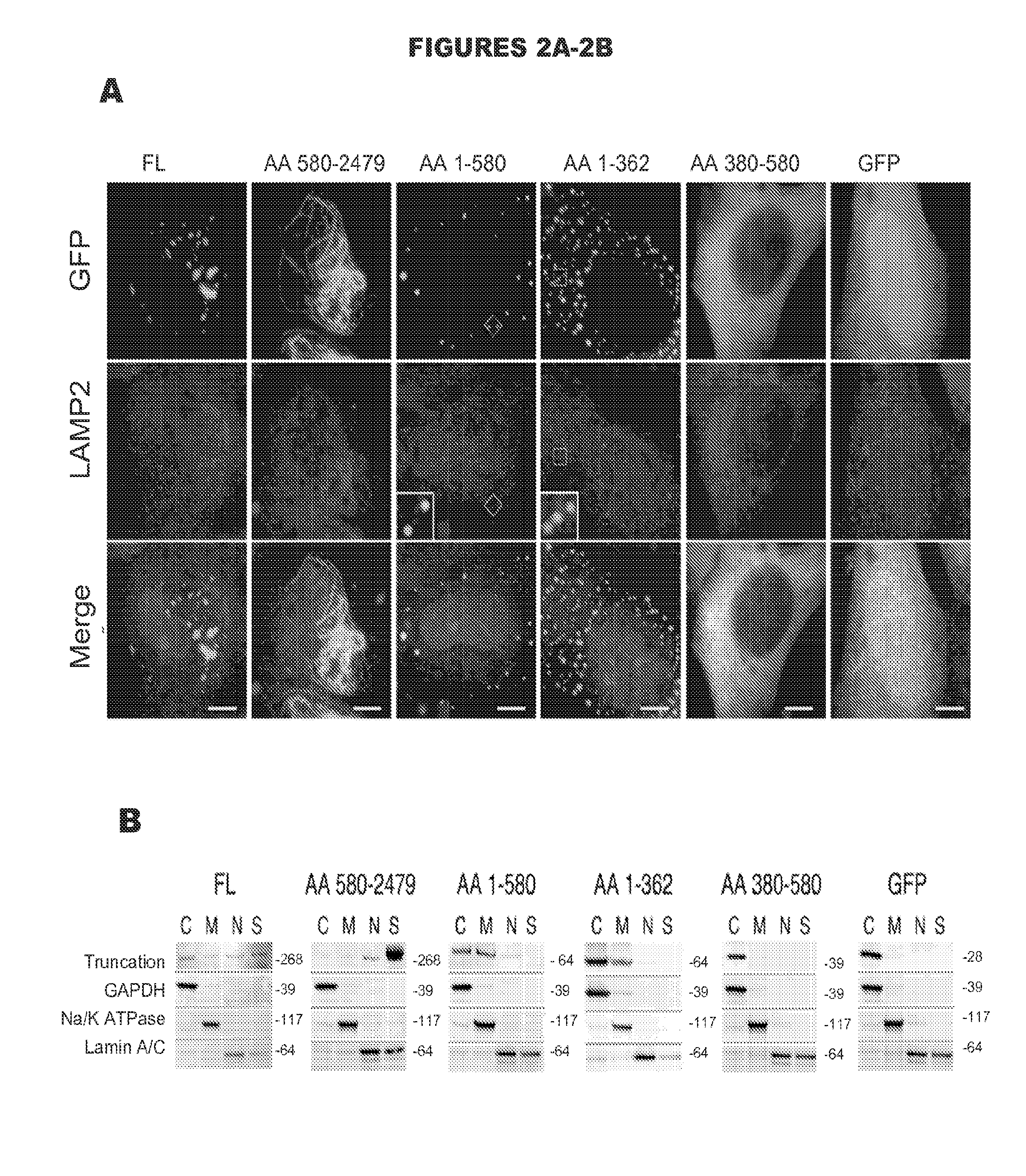Compositions and methods for treatment of disorders related to cep290
a technology of cep290 and cep290, applied in the field of cep290 disorders, can solve the problems that large gene sequences are difficult to fit effectively into some of the more useful vector delivery systems, and achieve the effect of preventing, arresting or ameliorating vision loss
- Summary
- Abstract
- Description
- Claims
- Application Information
AI Technical Summary
Benefits of technology
Problems solved by technology
Method used
Image
Examples
example 1
Materials and Methods
Plasmid Construction
[0101]CEP290 truncations were generated by PCR amplification using Gateway® cloning (Invitrogen) compatible primers identified below in Table 1 from a human codon-optimized CEP290 plasmid synthesized by DNA 2.0. Amplified products were directly cloned into pDONR221 (Invitrogen) by Gateway® cloning to generate entry clones. For cell transfection and in vitro transcription and translation assays, entry clones were shuttled into the plasmid pcDNA-DEST53 (Invitrogen) by Gateway® LR clonase reactions to create N-terminally tagged GFP fusions.
TABLE 1primers used to generate truncation mutantsSEQTruncationID NO.PrimerSequenceaa 7ForwardGGGGACAAGTTTGTACAAAAAAGCAGGCTTCGAAGGAGATA1-2479GAACCATGCCCCCAAACATCAATTGG 8ReverseGGGGACCACTTTGTACAAGAAAGCTGGGTCCTAATAGATCGGGAAGTTAACAGGaa 9ForwardGGGGACAAGTTTGTACAAAAAAGCAGGCTTCGAAGGAGATA580to2479GAACCATGACGGAGAACATAAGCCAAGG10ReverseGGGGACCACTTTGTACAAGAAAGCTGGGTCCTAATAGATCGGGAAGTTAACAGGaa1 to58011ForwardGGGGACAAGTTTG...
example 2
Cep290 Associates with ARL13B Positive Cellular Vessicles Via its N-Terminus
[0124]Mutations in the CEP290 gene have been implicated in a variety of human diseases, but their effects on protein function have not yet been characterized. Mutations clustering in particular regions of the gene might be indicative of important functional domains, but no mutational hotspots or functional domains have been identified to date (FIG. 1A). To understand the role CEP290 plays in cilium function, ciliogenesis, and human disease, a structure-function analysis was performed using a panel of truncation constructs spanning the full length of CEP290 in order to identify and define domains of novel functionality.
[0125]The first two CEP290 truncations displayed distinct localization patterns. When overexpressed as GFP fusion proteins, the N-terminal fragment of CEP290 (spanning aa 1 to 580) showed an exclusively vesicular localization pattern while the C-terminal fragment of CEP290 (from aa 580 to the e...
example 3
Cep290's Capacity for Membrane Association is Increased by Truncation of its C-Terminus
[0130]To further investigate CEP290's membrane association, a series of subcellular fractionation experiments on cells expressing each of our CEP290 truncations was performed. The CEP290 truncation spanning aa 580 to 2479 that produced a fibrillar localization pattern by microscopy was found almost exclusively in the cytoskeletal fraction, while truncations lacking this region were completely absent from the cytoskeletal fraction (FIG. 2B). On the other hand, truncations that included CEP290 aa 1 to 362 were again found to be significantly present in the membrane fraction when compared to either GFP alone or our fractionation controls (FIG. 2B). For both CEP290 aa 1 to 580 and aa 1 to 362, roughly 30% of each truncation was found to be associated with cellular membranes (FIG. 2C), demonstrating again that CEP290 aa 1 to 362 are necessary and sufficient for membrane association. Interestingly, a sm...
PUM
| Property | Measurement | Unit |
|---|---|---|
| Fraction | aaaaa | aaaaa |
| Concentration | aaaaa | aaaaa |
| Biological properties | aaaaa | aaaaa |
Abstract
Description
Claims
Application Information
 Login to view more
Login to view more - R&D Engineer
- R&D Manager
- IP Professional
- Industry Leading Data Capabilities
- Powerful AI technology
- Patent DNA Extraction
Browse by: Latest US Patents, China's latest patents, Technical Efficacy Thesaurus, Application Domain, Technology Topic.
© 2024 PatSnap. All rights reserved.Legal|Privacy policy|Modern Slavery Act Transparency Statement|Sitemap



